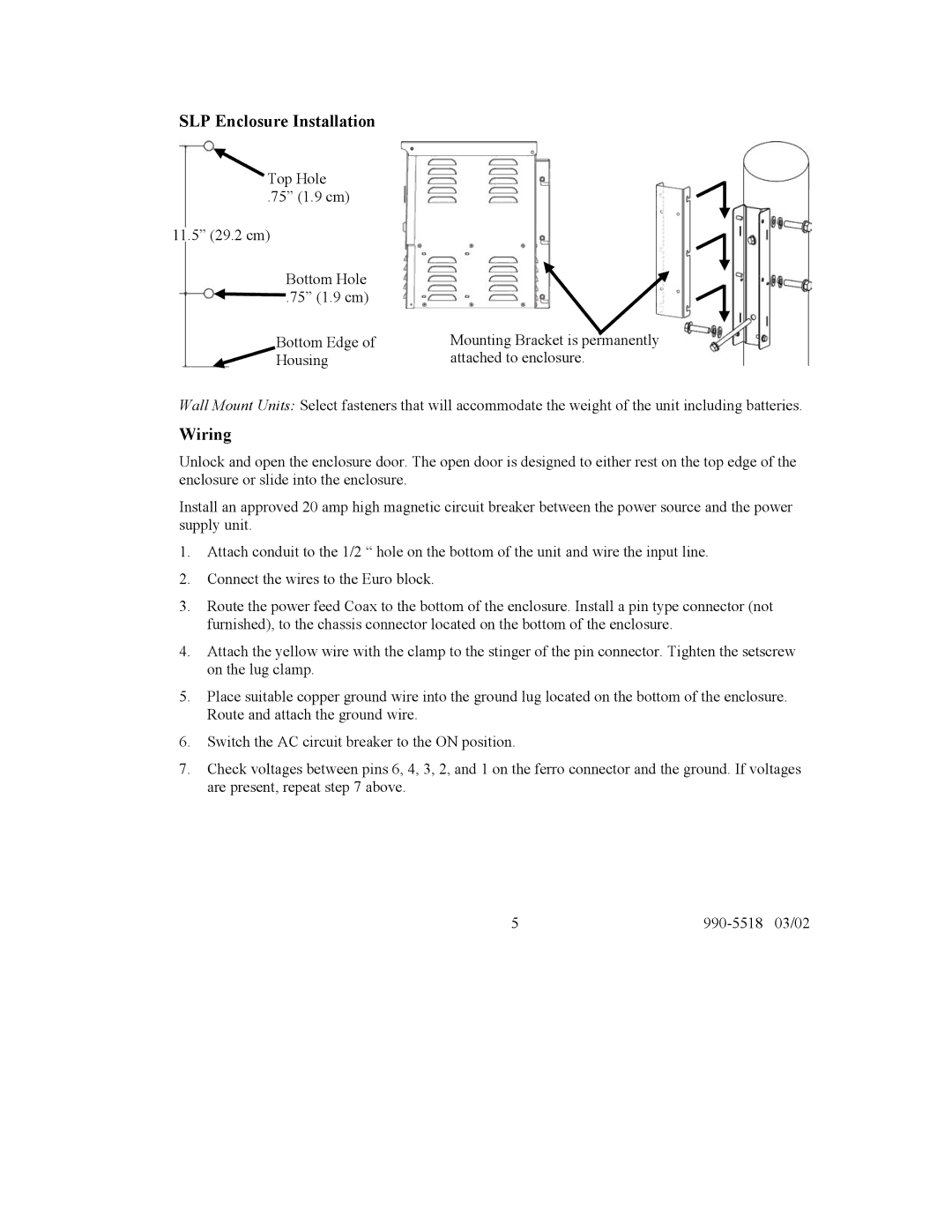CTSLP/G specifications
American Power Conversion (APC) has long been recognized for its commitment to providing reliable power solutions for both commercial and residential applications. One of their prominent products is the APC CTSLP/G, a robust and versatile power protection unit designed to ensure operational continuity and safeguard critical systems against power disruptions.The APC CTSLP/G is characterized by its impressive features, combining advanced technology and user-friendly design. One of its main features is its high availability, making it an ideal choice for environments that require continuous power supply, such as data centers, telecommunication systems, and healthcare facilities. The unit utilizes a double-conversion online technology, which ensures that the connected equipment receives consistent and high-quality power. This method converts incoming AC power to DC and then back to AC, effectively isolating sensitive devices from power fluctuations and providing them with clean power.
Another notable aspect of the CTSLP/G is its scalable architecture, allowing for the addition of extra battery packs to accommodate varying levels of power requirements. This feature is particularly beneficial for growing businesses that may need to expand their power capabilities without replacing the entire system. The modular design also enhances serviceability, facilitating maintenance and upgrades while minimizing downtime.
The APC CTSLP/G boasts a high efficiency rating, contributing to overall energy savings and reduced operational costs. Its intelligent energy management features enable users to monitor power consumption and optimize performance, aligning with sustainability goals. Additionally, the product includes advanced battery management technology that extends battery life and reduces maintenance needs by ensuring optimal charging cycles.
User interface and management capabilities are also significant attractions of the CTSLP/G. Equipped with an LCD display, users can easily access real-time information about power status, battery health, and alarms. It supports network management protocols such as SNMP, allowing for seamless integration with existing IT infrastructure and real-time monitoring via web-based dashboards.
In summary, the APC CTSLP/G combines cutting-edge technology, modular design, high efficiency, and advanced management features, making it a powerful solution for ensuring continuous power supply in critical environments. Its reliability and performance reflect APC's dedication to protecting devices and systems against the uncertainties of electrical disturbances.

